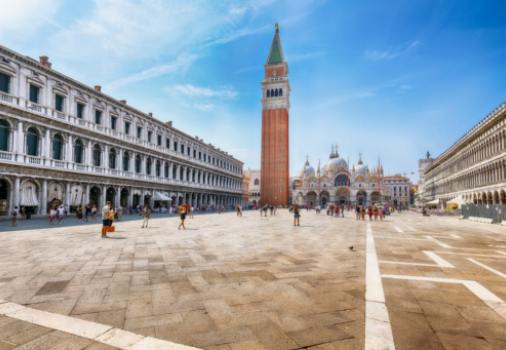Standing as a testament to centuries of history and architectural beauty, St. Mark's Basilica in Venice holds a wealth of significance within its walls. The influence of Byzantine art and architecture, as well as the power and wealth of Venice throughout the ages, are evident in the intricate design and treasures found within this iconic landmark. Join us on a journey through time as we unveil the historical significance of St. Mark's Basilica, from its origins to present day.

Byzantine Influence on St. Mark's Basilica
St. Mark's Basilica in Venice is a stunning example of the influence of Byzantine architecture and art in Italy. The basilica's construction was heavily inspired by the architectural style of Byzantium, with its domed roof, intricate mosaics, and ornate decorations. The Byzantine influence is evident in every aspect of the basilica, from its design to its artwork, making it a remarkable testament to the cultural and artistic exchange between the Byzantine Empire and Venice.
St. Mark's Basilica: A Symbol of Venice's Power and Wealth
St. Mark's Basilica stands as a symbol of Venice's power and wealth, showcasing the city's grandeur and influence in the ancient world. The intricate architecture and lavish decorations of the basilica reflect the prosperity and prominence of Venice during its prime. Visitors can't help but be awed by the opulence and magnificence of this historical landmark, a testament to the might and glory of the Venetian Republic.
The Treasures Within St. Mark's Basilica
St. Mark's Basilica is home to a myriad of treasures that reflect its rich history and significance. One of the most notable treasures is the Pala d'Oro, a stunning altarpiece adorned with thousands of precious gems and intricate enamel work. The basilica also houses the remains of St. Mark himself, one of the twelve apostles of Jesus, making it a revered pilgrimage site for Christians around the world. In addition, visitors can admire the impressive mosaics that decorate the interior of the basilica, showcasing scenes from the Bible and depicting the glory of Venice's past. These treasures serve as a testament to the importance of St. Mark's Basilica in both religious and cultural contexts, making it a must-see destination for anyone visiting Venice.
St. Mark's Basilica: From Past to Present
St. Mark's Basilica: From Past to Present
The history of St. Mark's Basilica is a rich tapestry that spans over a thousand years. Originally built in the 9th century to house the relics of St. Mark the Evangelist, the basilica has undergone numerous renovations and additions over the centuries, each contributing to its unique architectural style.
Throughout its history, St. Mark's Basilica has been a symbol of Venice's power and wealth. The basilica's stunning mosaics, marble pillars, and intricate carvings reflect the city's status as a major maritime power in the Mediterranean during the Middle Ages. Today, the basilica continues to be a popular tourist attraction in Venice, drawing visitors from around the world to admire its beauty and historical significance.
The treasures within St. Mark's Basilica are a testament to the city's long and storied past. The basilica's interior is adorned with stunning mosaics depicting biblical scenes, as well as a wealth of precious artwork and artifacts. Visitors can also view the famous Pala d'Oro, a golden altarpiece decorated with over 1,900 precious stones.
Despite its age, St. Mark's Basilica remains a vibrant center of worship and cultural heritage in Venice. Regular religious services are still held within its walls, and the basilica continues to be an important site for religious pilgrimages and ceremonies. Additionally, the basilica plays a significant role in Venice's annual cultural events, including the famous Carnevale di Venezia.
In conclusion, St. Mark's Basilica is a timeless symbol of Venice's rich history and cultural heritage. From its origins as a repository for sacred relics to its status as a major tourist attraction, the basilica has stood the test of time and continues to be a beloved landmark in the heart of Venice.
